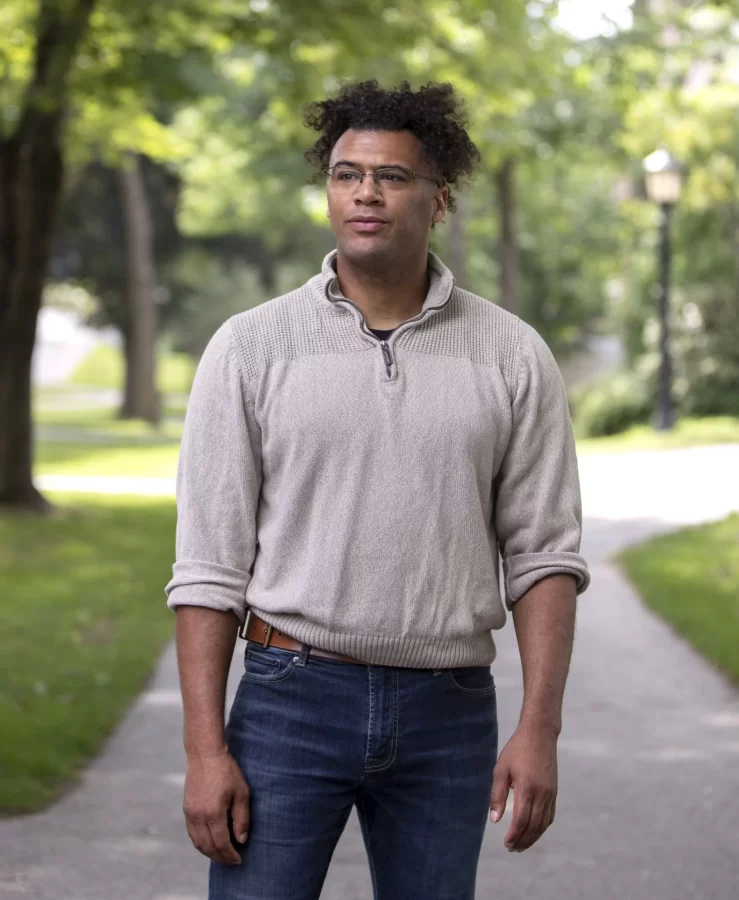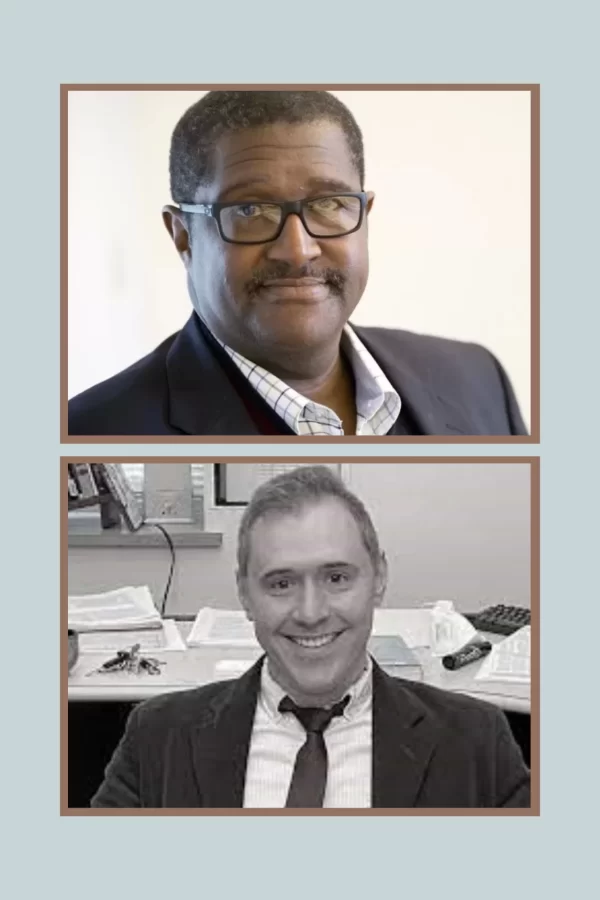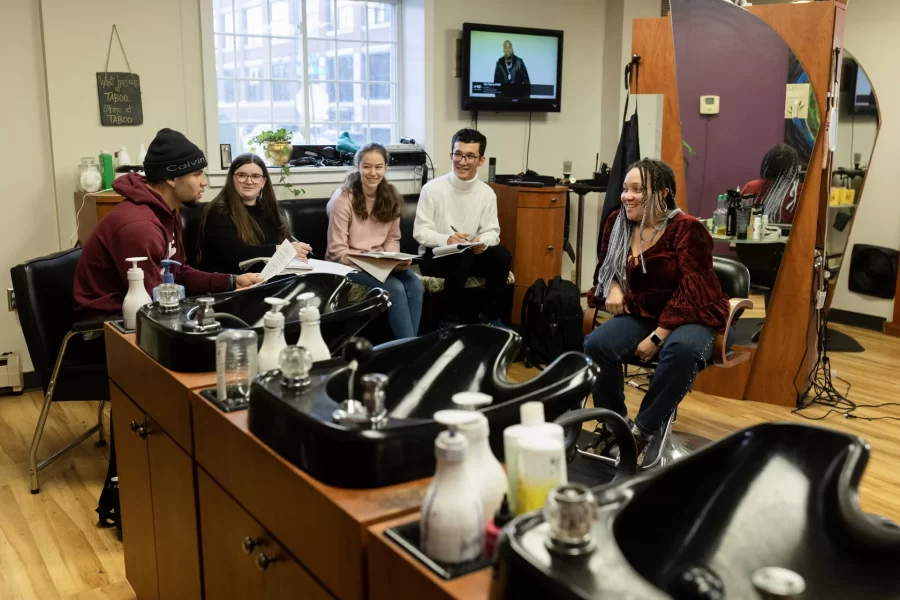New Resources for Understanding Our Community
At Bates, community engagement happens when students, faculty, or staff collaborate with an off-campus community member or organization to advance community well-being, social justice, and/or the common good, and when that collaboration is characterized by reciprocity and mutual respect. One form of community engagement that gets a lot of attention at Bates is community-engaged learning, or CEL. This is a structured approach to learning and teaching in which students apply knowledge and analytic tools gained in the classroom to real-world partnerships and projects. As they collaborate with interested community partners to pursue community-identified goals and initiatives, students ideally (and usually) enhance their own learning, personal growth, and civic identity. CEL can take many forms, but it always prioritizes both student learning and community benefit, as defined or affirmed by the community partner.
In most CEL courses, the community partner is a nonprofit organization. Sometimes, it is a government entity like the Lewiston Recreation Department, the City of Auburn’s Sustainability & Natural Resource Management Board, or the Maine Department of Education. Occasionally, the partner is an individual person. Among the dozens of CEL courses offered last Fall at Bates, two courses featured projects in which students collaborated not with an organization or agency but with individuals. In both cases, these individuals served as Community Educators. As such, they shared insights, expertise, and perspectives with students that complemented or expanded what they were learning in class. Students then drew on this expanded knowledge base to create resources designed to educate other students and the wider public about the community where Bates is located. These resources were vetted and approved by participating partners and are now featured on the Harward Center’s Resources for Understanding Our Community webpage.
One of these courses was a First Year Seminar entitled “Embodying Activism,” taught by Assistant Professor of Dance Brian J. Evans. As a conduit to learning skills for critical thinking and college-level writing and research, students in the course learned about different forms of activism and gradually developed their own understanding of what it means to embody activism in today’s world. Toward that end, each student was paired with a Maine-based activist whom they got to know and about whom they eventually wrote a profile, as one of their writing assignments in the class. These activists’ stories and experiences served as a text within the class that was put into conversation with other course texts and with the students’ own stories and evolving understanding of activism. With support from a Project Pericles grant, professional photographs were taken of each activist, and these photographs, along with the student-written profiles, were assembled into a gorgeous small book (pdf version here) designed to educate Bates students and others about some of the diverse activists and activism happening in the Lewiston/Auburn and Portland, Maine communities. For their part, participating activists expressed enthusiasm about the opportunity to have their work and causes shared with new publics and to be able to help educate the next generation. (They also appreciated the professional photos!)
Community educators were also included in last Fall’s Africana 100, taught by Charles Nero, Benjamin E. Mays ’20 Distinguished Professor of Rhetoric, Film, and Screen Studies and Africana, and Visiting Assistant Professor of Anthropology and Africana Joshua Rubin. The course, whose theme was “Seeing and Being Seen,” included a community-engaged project in which students met with and interviewed Black barbers and hair stylists in the Lewiston and Auburn area. Informed by what they learned from Black hair care providers and other course materials, the class authored a collaborative essay, “Black Artistry, Beauty, Self-Expression, and Community: Stories and Experiences from Black Barbershops and Salons in Lewiston/Auburn, Maine.”
This work of public scholarship is intended, in the words of the authors, to “shed light on Black barbershops and salons as important entrepreneurial endeavors that historically have done the vital work of celebrating Black culture and connecting communities by allowing Black people to be seen as beautiful, stylish, confident, and professional.” The project was highlighted in a recent edition of This Month at Bates, as well as in the most recent newsletter of The Third Place, “a cross-sector network that connects Maine’s Black professionals, students, and entrepreneurs to social, professional, and economic opportunities.” The Third Place’s president and executive director, Adilah Muhammad, was an important partner for this CEL project.
Whether their community partner is a nonprofit organization, a government agency, or an individual, community-engaged learners at Bates are encouraged and guided to practice critical self-awareness, reciprocity, and gratitude.


